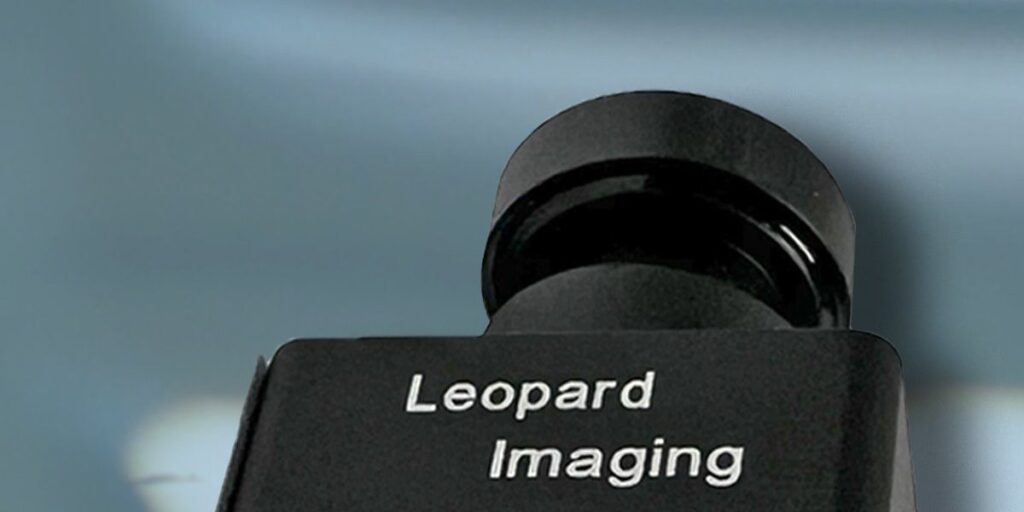Madrid-based fabless semiconductor company KD and Fremont, Calif.–based embedded camera maker Leopard Imaging have launched a significant upgrade to cameras for vehicle vision systems. It’s the first system for automotive applications with an Ethernet networking backbone to break the 10-gigabit-per-second transmission speed barrier.
10 Gb/s is 10,000 times as fast as the widely used 1-megabit-per-second Controller Area Network (CAN) protocol, marking a shift from legacy in-vehicle networks like CAN, the 20-kilobit-per-second Local Interconnect Network (LIN) protocol, and even 1-Gb/s Ethernet to a high-speed backbone capable of supporting autonomous systems, centralized computing, and next-gen infotainment—all at once and with low latency.
Pablo Blázquez, KD’s business development manager, says the company’s technology—originally proven in data centers—now meets even stricter automotive standards for durability. Unlike data centers, which are air-conditioned rooms with few if any disturbances, vehicles (and any optical transceivers installed on them) must stand up to harsh conditions including high heat and bitter cold, unrelenting vibration, and physical wear and tear. Standards such as IEEE 802.3cz require a 15-year minimum lifetime for automotive optical transceivers, while those in data centers get swapped out every few years as part of regular maintenance protocols.
As automakers push toward advanced driver assistance systems (ADAS) and fully autonomous driving, the volume of in-car data is skyrocketing. Cameras, sensors, and displays all generate massive data streams—and the cables connecting them must keep pace. By replacing heavy copper harnesses with optical fiber, the system eliminates electromagnetic interference, reduces weight, and supports automakers’ goals to cut emissions, lower costs, and boost safety.
“I think the car of the future will be a moving data center equipped with a high-performance computer (HPC), numerous sensors, 6G radio systems, and an optical backbone network to connect them all,” says Hiroyuki Tsuda, an electrical and computer engineering professor at Keio University in Tokyo. “This will enable us to use our time in the car for business or entertainment while AI-enabled HPC systems do the driving for us,” adds Tsuda, whose research focuses include in-vehicle optical networks and photonic integrated circuits for long-haul optical networks.
The “moving data center” analogy aptly describes KD’s tech. By making use of mature data-center technology like vertical-cavity surface-emitting lasers, or VCSELs, that transmit 980-nanometer wavelength light pulses, the transceiver meets demands for high efficiency, low noise, and low power. Crucially, it’s also future-proof: Automakers can reuse the same fiber and connectors when upgrading from 2.5 to 25, 50, or even 100 Gb/s—simply by swapping out transceivers and peripherals.
Blázquez notes that KD chose 980-nm lasers over 650-nm ones in part because the suitable light sources for 650-nm lasers are not yet as widely available as the more established 980- and 850-nm VCSELs which dominate optical data communication and sensing. Though 650-nm VCSELs have lower signal attenuation than 850-nm versions, they don’t outperform the 980-nm lasers KD uses. What’s more, 980-nm lasers are far less susceptible to power dissipation, mechanical stress, and degraded performance at high and low temperatures than their 850-nm counterparts.
According to Blázquez, automaker interest in its optical-fiber-backbone solution is already high, particularly in Asia and Europe, with prequalification and pilot projects underway. KD’s optical data transceiver, he says, could show up in premium vehicles within two to three model years, with broader adoption likely to follow.
“I think the car of the future will be a moving data center equipped with a high-performance computer, numerous sensors, 6G radio systems, and an optical backbone network to connect them all.” –Hiroyuki Tsuda, Keio University
Smoothing the way for rapid adoption is the fact that optical networks also solve persistent design headaches. Because optical fiber is impervious to electromagnetic interference, automakers are free to route cables through tight spaces. And cable lengths up to 40 meters rocketing data from sensors to processors to actuators at 10 Gb/s make optical harnesses ideal for large commercial vehicles that need high-resolution 360-degree camera systems.
High-Performance Automotive Cameras
KD chose to partner with Leopard Imaging for the system’s cameras because of the company’s reputation for compact, high-performance automotive cameras, says Blázquez. “We wanted to prove our optical transceiver could deliver on standards like IEEE 802.3cz when paired with a tiny optical sensor.” The LI-VENUS-ISX031 camera, with its high-resolution and wide-angle imaging, is smaller than 20 millimeters on a side—minuscule enough for side mirrors or other spots where aerodynamic drag must be minimized.
There’s also a safety element. “Lower latency and higher bandwidth mean your car’s sensors react faster and more reliably—and that means people are safer,” Blázquez says.
In the relentless push toward self-driving cars, this is an invisible upgrade with unmistakable payoffs: cleaner design, faster data, and lives saved.
From Your Site Articles
Related Articles Around the Web
